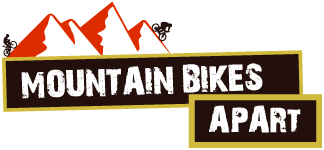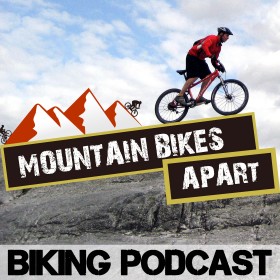In this edition of the Mountain Bikes Apart podcast, we move on to the third part of our series of podcasts for new and beginner mountain bikers. Here, we’re discussing saddles and seatposts, which play a big role in the handling of your bike as well as comfort when riding. Remember, even though this series is aimed more towards the beginner rider, more established mountain bikers are sure to pick up a few tips and ways to improve the setup of their MTB.
Regular vs Dropper seatposts
Dropper ‘posts seem to be all the rage right now. In case you don’t know, a dropper seatpost is a seatpost that can be lowered when descending, either by a lever under the saddle, or a shifter on the handlebars. Some use hydraulics, some cables, and there’s even wireless dropper ‘posts starting to hit the market!
In the podcast, we discuss the key advantage of dropper seatposts, which is that they allow you to get the saddle out of the way for when the trail gets steep. This allows you to move your weight around the bike far more easily, and puts you in a much more optimised position for aggressive downhill. You then simply flick the switch again to return the seatpost to the optimal position for climbing.
The disadvantages are obviously increased weight, increased maintenance and another lever to mount and operate on the handlebars. Despite these drawbacks, the latest droppers are fairly lightweight, and often very well sealed, meaning once they’re set up, they shouldn’t require too much messing about with.
If you’re racing XC on particularly gnarly tracks or getting into Enduro racing, dropper seatposts are definitely worth a look at.
Saddling up
When it comes to choosing a saddle, it can be a potential minefield. There’s all sorts of things to consider, from the amount of padding, the shape of the saddle, the shell material, the rail material and so on! Colin and I discuss our thoughts when it comes to deciding on the right saddle for you.
When it comes to choosing a saddle for racing, weight is obviously going to be a more pressing concern than for general trail riding. If this is a priority, going for a high-end saddle with a carbon shell is a good option. The material used for the rails will also affect the weight, and you typically have a choice between carbon and aluminium or titanium. For anything other than out-and-out XC racing, we’d suggest going for the latter two.
The most important thing that we both agree on is getting the right shaped saddle to suit you. It’s surprising how little padding you need on a saddle when it fits you correctly. This may take a bit of trial and error, and it may not click right away, as Colin explains. However, you’ll know when you’ve got one that fits, and it’ll make your rides a heck of a lot more enjoyable.
Dialling it all in
Once you’ve decided on a saddle, you’ll then need to dial in the position to take full advantage of the comfort and performance benefits. We first talk about saddle height, which is key for getting the most power down, but also avoiding injuries around the knee.
A good rule of thumb which both Colin and I follow is setting the saddle at a height where you can pedal backwards with your heels on the pedals and still have a slight bend in the leg. Alternatively, you can position the top of the saddle so that when you stand next to the bike, it is just above your hip bone. Of course, a bike fit is the gold standard, and if you can afford it, we’d definitely recommend that too.
Incorrect saddle height can present some nasty problems, particularly around the knee as just mentioned. A saddle that is too low will put excessive stress on the front of the knee, where pain is often felt under the kneecap. On the flip side, a saddle positioned too high will excessively rock the hips and can present pain behind the knee and in the hamstring.
Wrap up
When choosing your saddle, start by looking at those that fit your style of riding. It’s then a case of experimenting with a variety of shapes, designs brands etc to find one that fits your body.
If you’re someone who rides all kinds of trails, then a dropper post may well be the best upgrade you can make to your bike right now. It’ll help improve your position when descending, without compromising your climbing and likely make your riding a lot more fun.
If you have any questions about saddles, seatposts and setups, just drop myself or Colin a line. You can get in touch as always via the website, or hit us up on Twitter, where Colin is @colinmcgray and I’m @bytombell.
In the next episode, we’re talking MTB wheels. We’ll catch you then.
Podcast: Play in new window | Download
Subscribe: RSS


Recent Comments